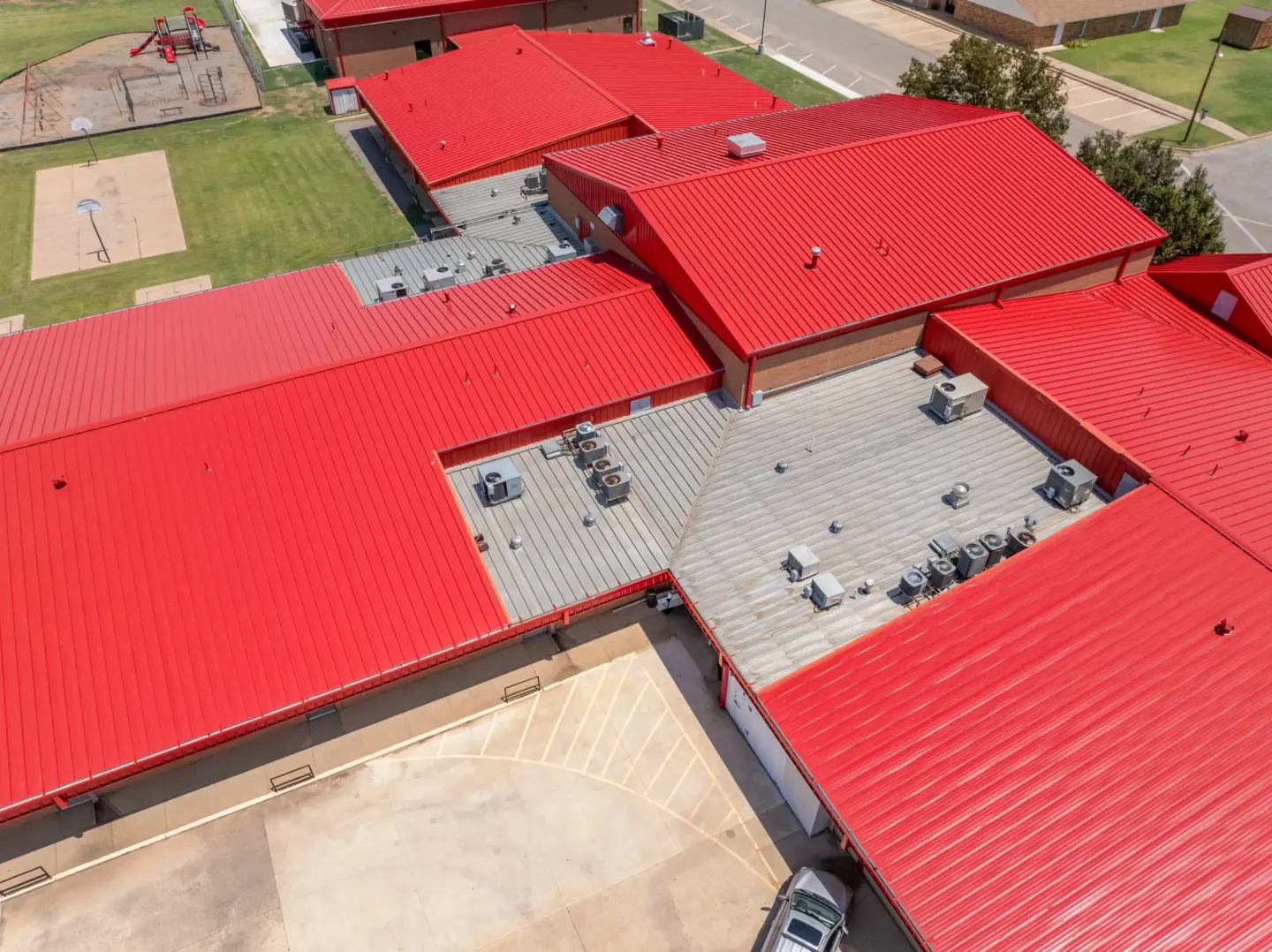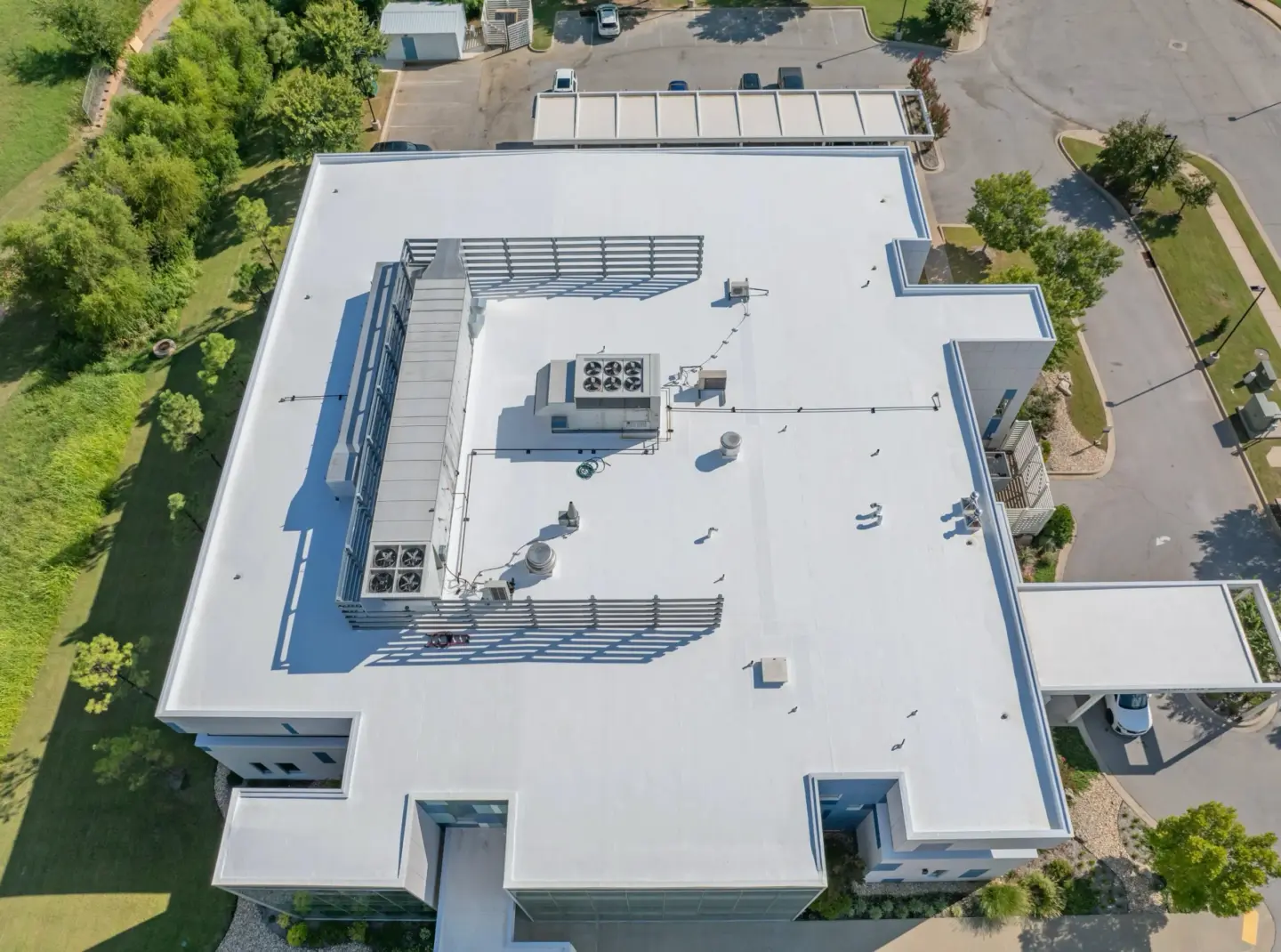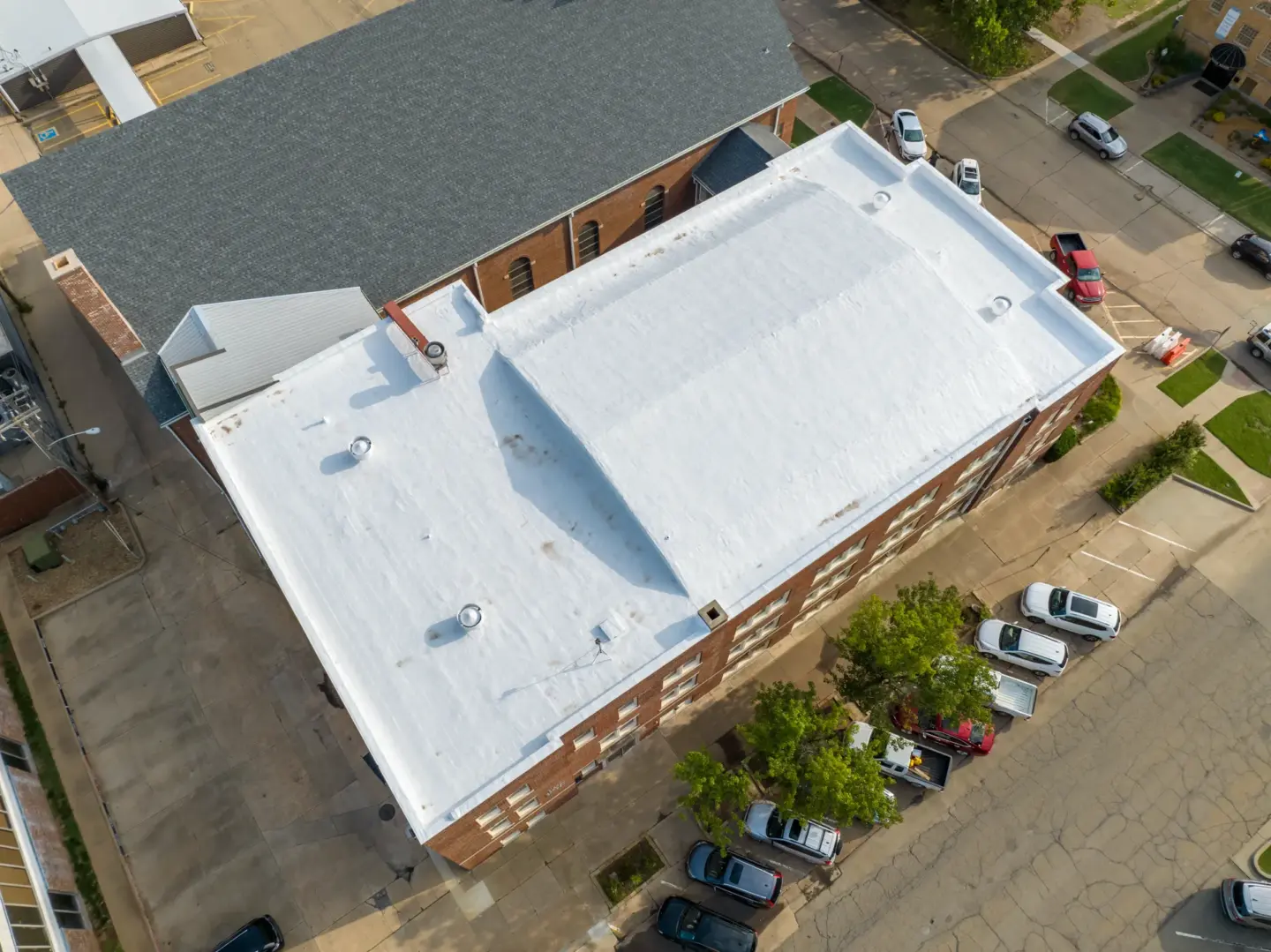Choosing a commercial roofing contractor is one of the most important decisions you’ll make when maintaining or replacing your building’s roof. Your roof protects your entire facility—your equipment, people, and operations—and plays a critical role in energy efficiency, safety, and structural integrity. Whether you’re managing a school, church, industrial site, or commercial facility, your roofing partner should bring more than just tools and materials to the job—they should bring expertise, communication, transparency, and trust.
With so many different roofing systems available today, selecting the right contractor can be overwhelming. From standing seam metal to single-ply membranes like TPO, spray foam and liquid-applied systems, to premium materials like slate or tile, each type of roof requires specialized knowledge and a tailored installation process.
Let’s walk through what to look for in a contractor and how to ensure your project is handled with care, precision, and long-term performance in mind.
Understanding Commercial Roofing Systems
Before choosing a contractor, it’s important to understand the major types of roofing systems they may recommend. The right contractor will guide you in selecting a system based on your building’s unique needs, climate exposure, and operational use.
Standing Seam Metal Roofing
Highly durable and low maintenance, standing seam metal roofs are known for their longevity and weather resistance. Ideal for structures that prioritize performance and modern aesthetics, metal roofs can last 40+ years with minimal upkeep.

TPO (Thermoplastic Polyolefin)
TPO is a single-ply membrane that offers strong UV resistance, energy efficiency, and heat-welded seams for excellent waterproofing. It’s a cost-effective choice for flat or low-slope commercial roofs.

SPF/Liquid-Applied Roofs
Spray polyurethane foam (SPF) or other liquid-applied membranes create a seamless, fully-adhered waterproof barrier. These are especially effective for irregular roof shapes and roofs that require added insulation value.

Slate or Tile
For facilities with historic or aesthetic importance—like churches or institutions—slate or tile (like DaVinci or Ludowici) offer visual impact with high durability. While more expensive, these materials offer unmatched longevity and performance.

Pro Tip: The best roofing contractors don’t just install what they’re familiar with—they help you understand which system works best for your needs.
What to Look For in a Commercial Roofing Contractor
Not all contractors are created equal. Here are five key traits to look for when choosing someone to handle your commercial roofing project:
1. Planning Your Roofing System the Right Way
Commercial roofing isn’t a one-size-fits-all process. From roofing components and drainage plans to insulation and venting, every detail impacts the performance and lifespan of your roof.
At Next Phase Roofing, we take the time to evaluate your existing structure, understand your priorities, and design a system optimized for performance, longevity, and minimal disruption. Our detailed planning process includes front-end research into building use, location-specific weather challenges, and structural needs—ensuring your roof is built to last.
2. Transparency and Licensing
A trustworthy contractor should keep you in the loop at every stage. You deserve clear communication about timelines, costs, material options, and any issues that arise during the project.
We are fully certified and hold a commercial-endorsed roofing license. From project kickoff to final inspection, we use real-time collaboration tools, detailed proposals, and scheduled progress updates to keep your team informed and confident.
3. Minimal Disruption to Your Operations
A major concern for many facility managers is how a roof replacement will impact daily operations. At Next Phase, we specialize in roofing active environments like schools, churches, and busy commercial facilities.
Our crews are trained to work around sensitive schedules—such as class hours or worship times—and we always prioritize safety for staff, students, and visitors. We also plan for waste removal, temporary material storage, traffic control, and site protection to ensure your property remains functional and safe throughout the project.
4. Expertise in Materials and Performance
Not all roofing materials perform the same in every environment. Exposure to chemicals, temperature swings, foot traffic, or high winds can impact how long a system lasts.
We advise clients based on years of experience working in unique climate zones. Whether you’re in an area with high rainfall, extreme summer heat, or prone to hailstorms, we’ll recommend the right system and explain how it will perform over time.
5. Honest, Knowledgeable, and Reliable
After a storm, it’s common to see contractors rushing into affected areas looking for quick work. Unfortunately, many of these companies leave behind poor workmanship and little accountability.
At Next Phase Roofing, we’ve built our reputation on trust, integrity, and long-term relationships. We use interactive hail maps, offer complimentary roof inspections, and bring the latest technology and best practices to every job. Our goal isn’t just to install a roof—it’s to protect your investment for the long haul.
Key Takeaways
Choosing the right commercial roofing contractor is about more than just completing a project—it’s about ensuring long-term performance, protection, and peace of mind.
Our expertise in inspections, maintenance, repairs, and replacements and installations makes us the trusted, turn-key solution for schools, churches, industrial, and commercial properties. With our commitment to durability and superior customer service, we make repairing or replacing your roof seamless and stress-free—ensuring your building stays protected against the harshest conditions.
Contact us today or call 405-500-7663 to schedule an inspection.
Ready for your Next Phase?
Our commercial roofing experts turn insight into action. Schedule a consult and secure a storm-ready solution for your facility before the next front rolls through.